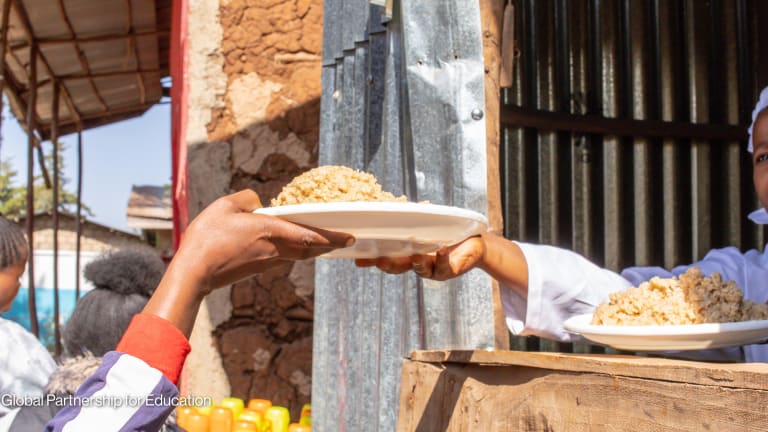
Approximately 87% of the world’s agricultural subsidies are harmful to people and the planet, and they distort the price of food, according to a new United Nations report.
The report — produced by the Food and Agriculture Organization, UN Environment Programme, and U.N. Development Programme — found that $470 billion worth of the subsidies spent on agricultural producers annually are damaging the world’s ability to feed a growing population because they are economically and environmentally unsustainable. Recalibration of this spending is needed if the food system is to be reformed to meet the Sustainable Development Goals by 2030, it said.
“[Support to farmers] is not fairly distributed and has also led to some farming practices that are harmful to nature and human health,” Marco Sánchez, FAO deputy director of agrifood economics, told reporters during a briefing Thursday. “What then, can we do, based on this problem? … The answer is very simple, according to us: We need to repurpose agricultural producer support.”
Get the inside track on how agriculture, nutrition, sustainability, and more are intersecting to remake the global food system in this weekly newsletter.
This means reducing support measures that are inefficient, unsustainable, and inequitable while replacing them with the opposite, according to Sánchez. “We need to reform the rules of the game. We need new laws, regulations, and institutions that make this move possible,” he said.
Transforming agrifood systems should happen in line with the global COVID-19 economic recovery, the U.N. agencies said, by taking advantage of public spending packages to maximize return on investment. One of the main ways to improve food systems, according to the report, is by changing agricultural subsidies, which amount to $540 billion, or 15% of the sector’s production value.
“Farmers have reason to view these as good policies, of course. For example, a price incentive for a fertilizer subsidy will reduce the cost for them. Or a trade agreement that guarantees access to markets for a crop would prompt many farmers to invest in that crop,” Sánchez said.
“What is the problem then? Well, the problem is that price incentives are the result of border measures and market interventions … that keep producer prices above market level. In this way, they distort prices, trade, production, and consumption decisions.”
Current subsidies don’t reach all farmers and are overly concentrated on certain crops, Sánchez said. Heavy subsidies for commodities such as beef, milk, rice, and sugar — some of the most emission-intensive to produce — hinder the incentive for producers to diversify, he said. Subsidies for staple crops adversely impact healthy diets, as farmers see less benefit to growing fruits and vegetables.
Subsidies also support farmers in using a specific input, such as fertilizer, which can be harmful to the environment.
The report presented solutions to reconfigure agricultural spending, which it said will help solve a host of ills. This includes eradicating hunger, improving nutrition, achieving food security, promoting sustainable agriculture, mitigating the climate crisis, reducing inequalities, and restoring nature.
While hunger levels were already rising before the pandemic, COVID-19 and a number of other disasters have hit fragile countries particularly hard. Released earlier this year, “The State of Food Security and Nutrition in the World 2021” found 12% of the world's population was severely food insecure in 2020. Even though the world produces enough food to feed the population, nearly 3 billion people cannot afford a nutritious diet.
“Repurposing agricultural support is a unique opportunity to transform food systems, but it will not happen without the strong backing of government.”
— Marco Sánchez, deputy director of agrifood economics, FAOThis week’s report recommended that governments take six steps when reconfiguring their spending on agricultural subsidies: “estimating the support already provided; identifying and estimating the impact of the support provided; designing the approach for repurposing agricultural producer support, including identifying needed reforms; estimating the future impact of the repurposing strategy; reviewing and refining the repurposing strategy, prior to implementation; and monitoring the outcomes of the new agricultural producer support.”
Not all agricultural subsidies are harmful, the report said. About $100 billion worth support infrastructure, research, and development, and they benefit the food and agriculture sectors overall.
Shifting the way that governments support agricultural activities is also necessary to meet the Paris Agreement goals, the report said, as the sector’s greenhouse gas emissions make it one of the largest contributors to climate change. It also adds to biodiversity loss and the pollution of waterways.
Sánchez acknowledged that making large-scale changes to the current system of agricultural subsidies will hit some farmers hard and that measures such as cash assistance will be required to mitigate these short-term effects until producers can recalibrate.
“We need to scale up expenditure and investment for the provision of public goods and services for agriculture — in particular, infrastructure and research and development that helps develop environment-friendly technologies and support climate adaptation and risk-management measures,” he said.
“Repurposing agricultural support is a unique opportunity to transform food systems, but it will not happen without the strong backing of government and leveraging, urging action at coming international events — beginning this September with the Food Systems Summit.”









